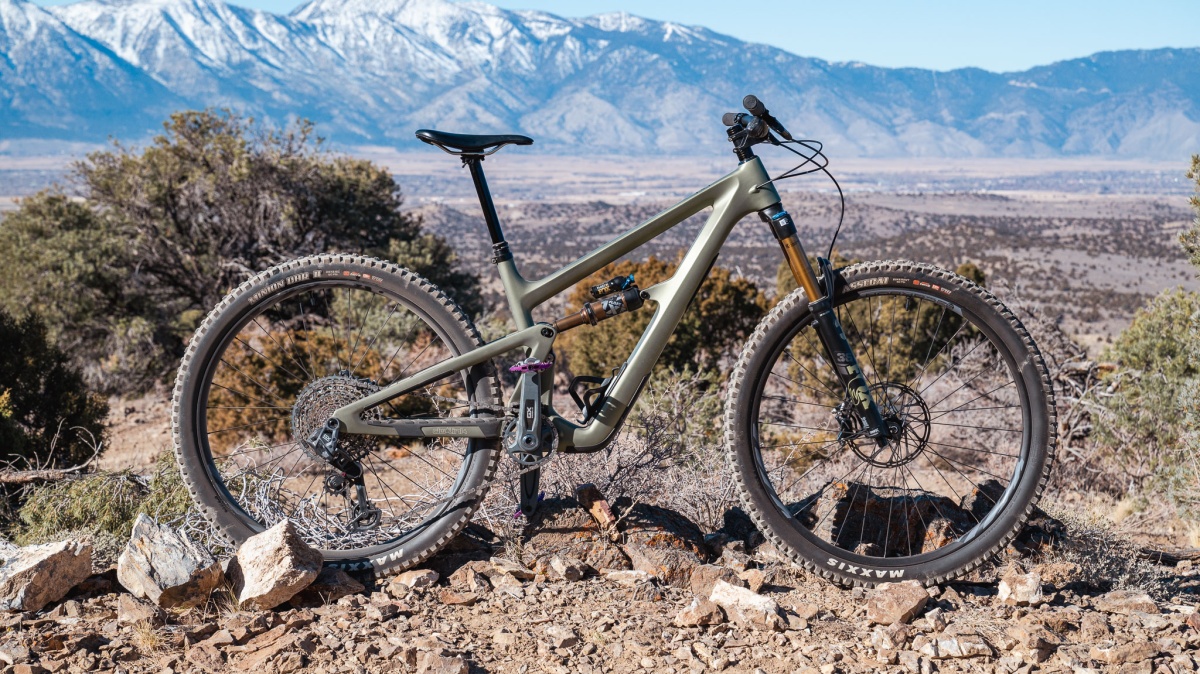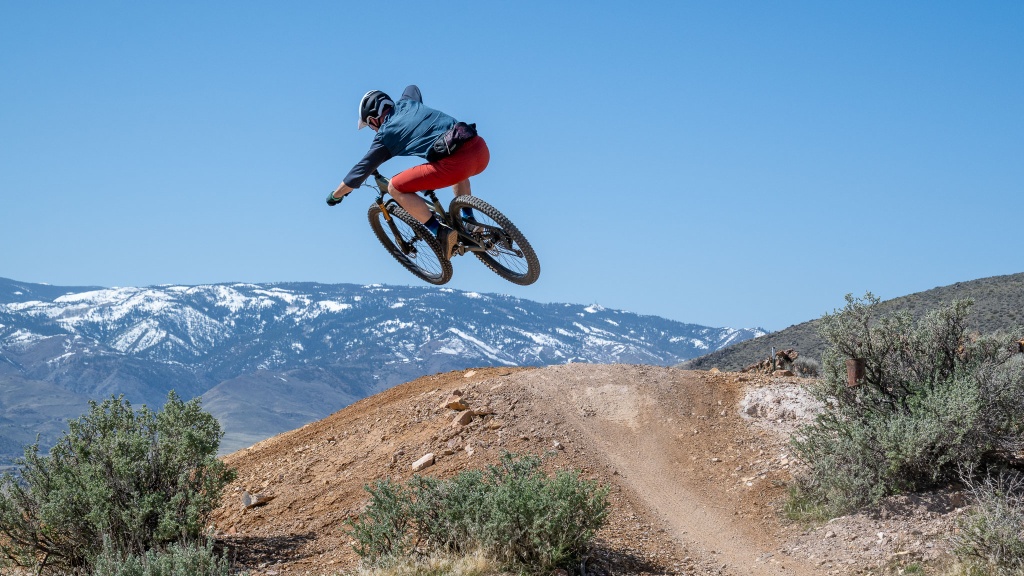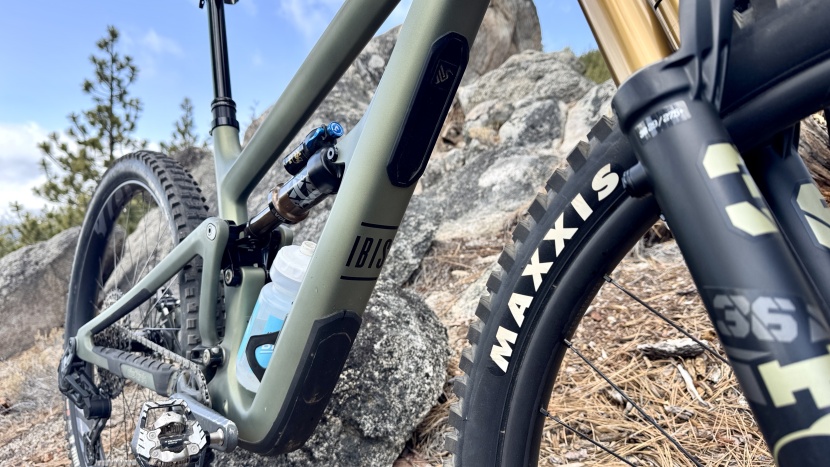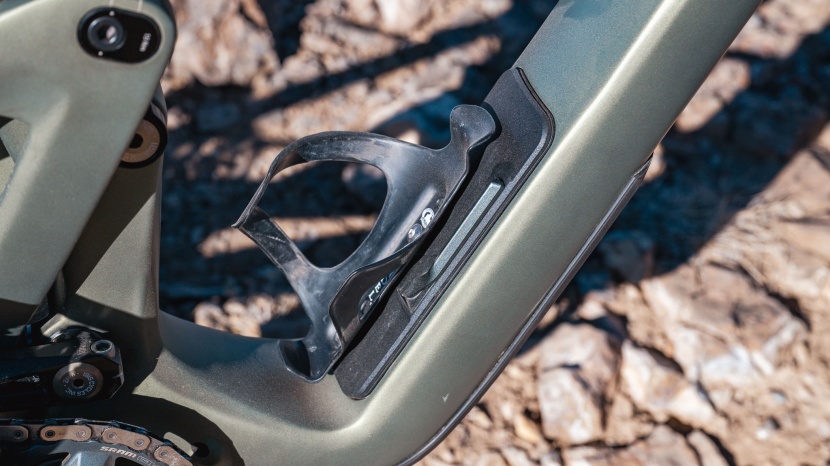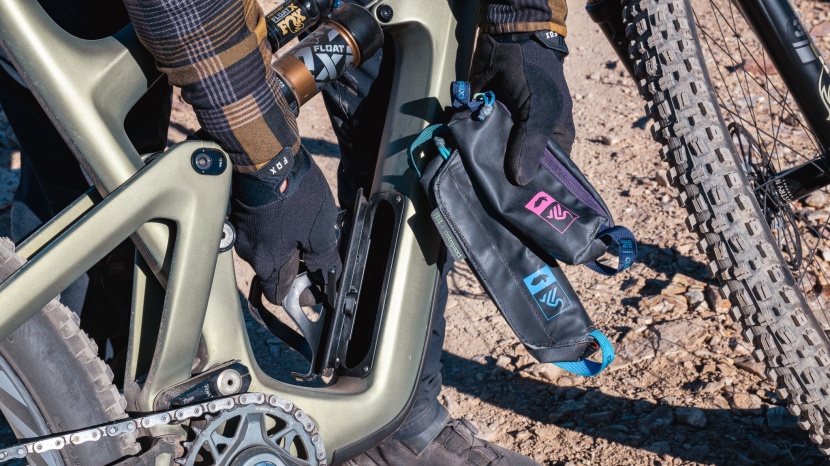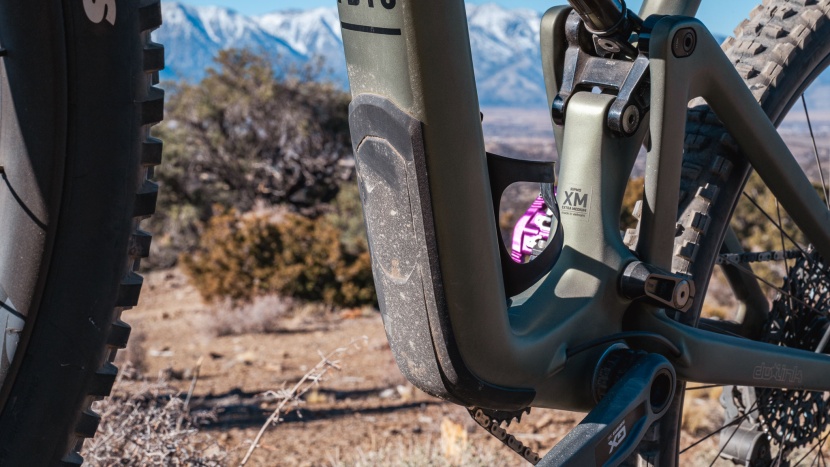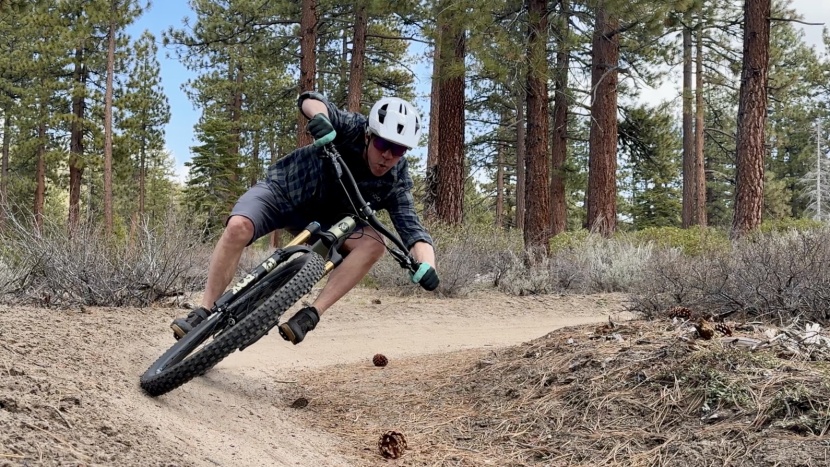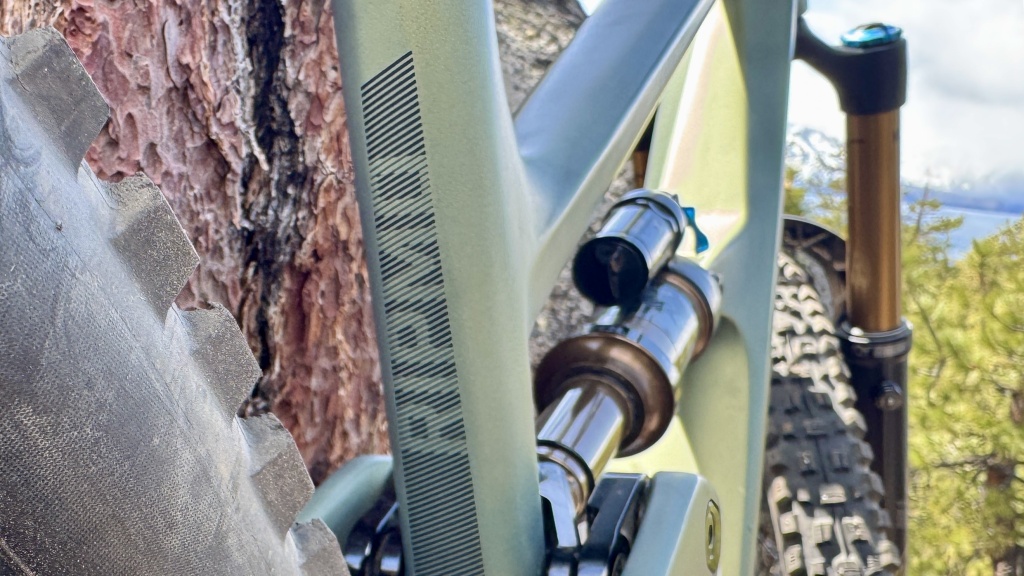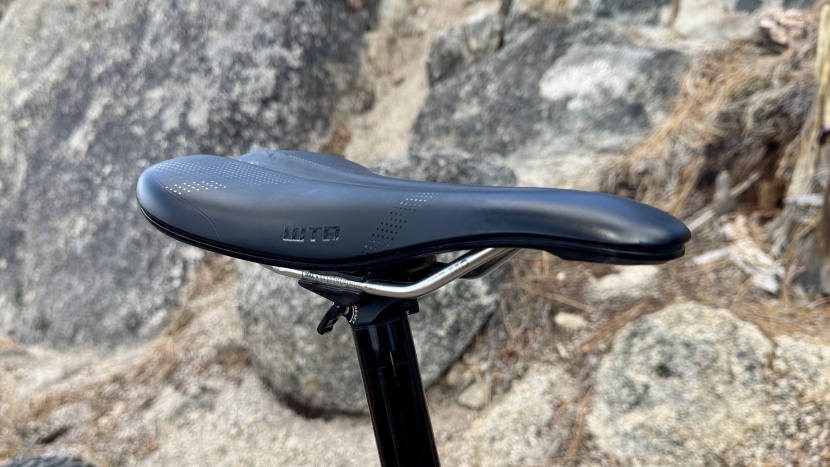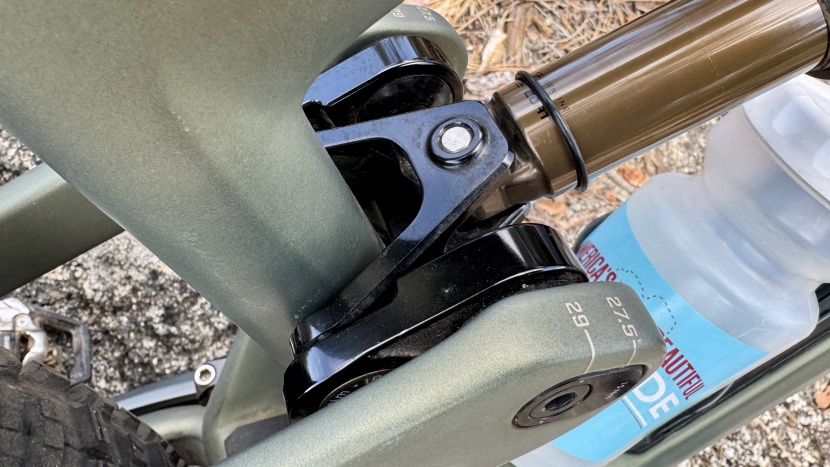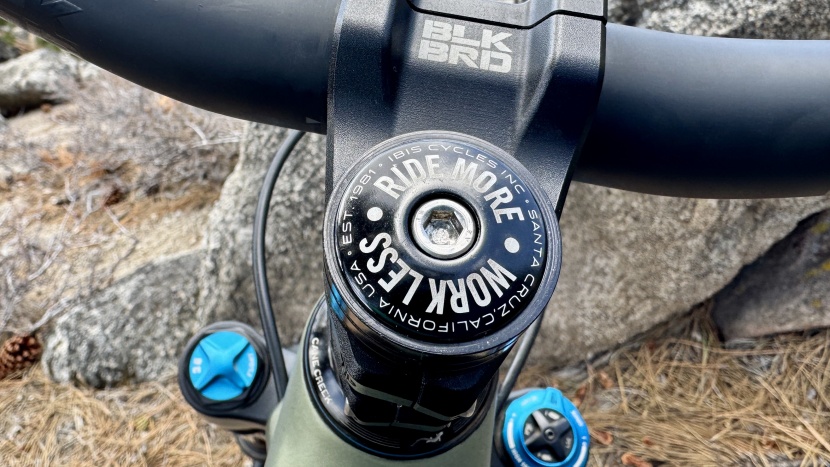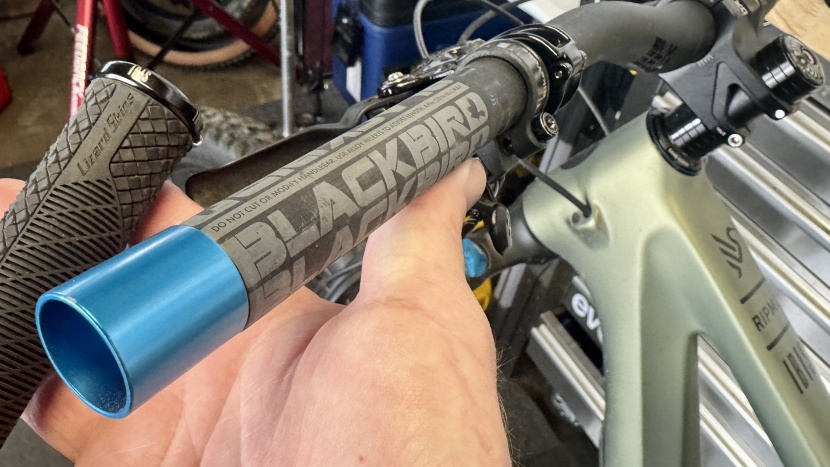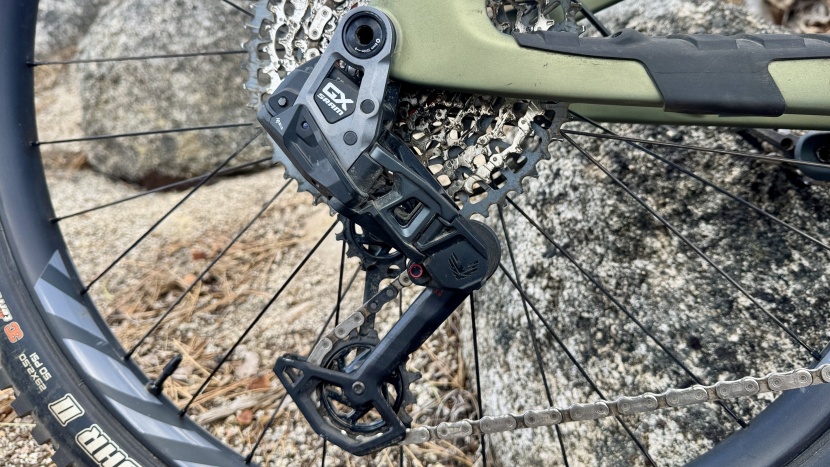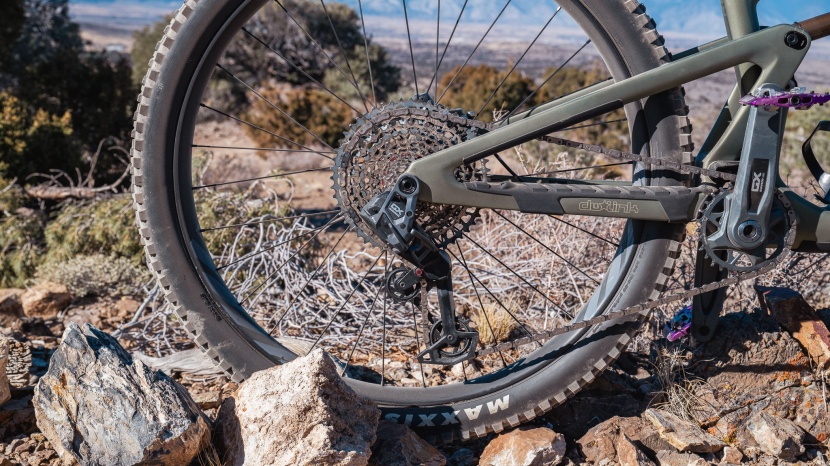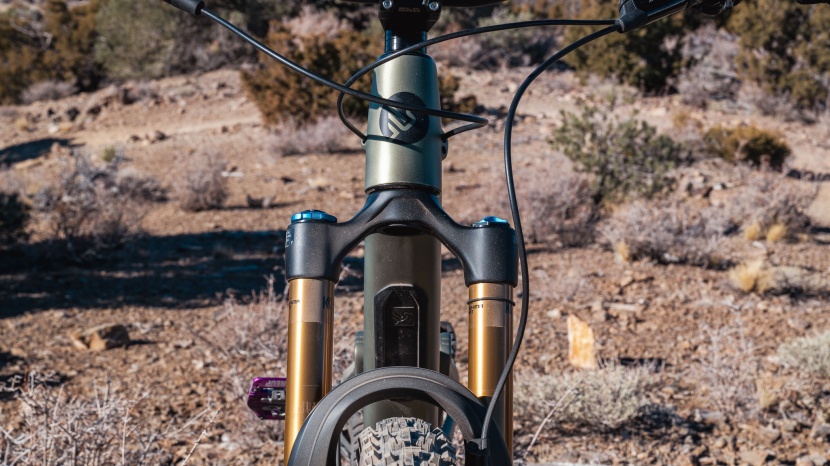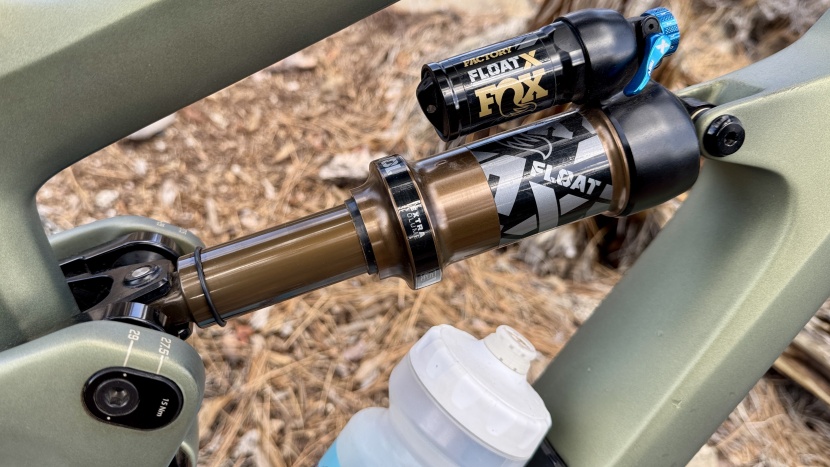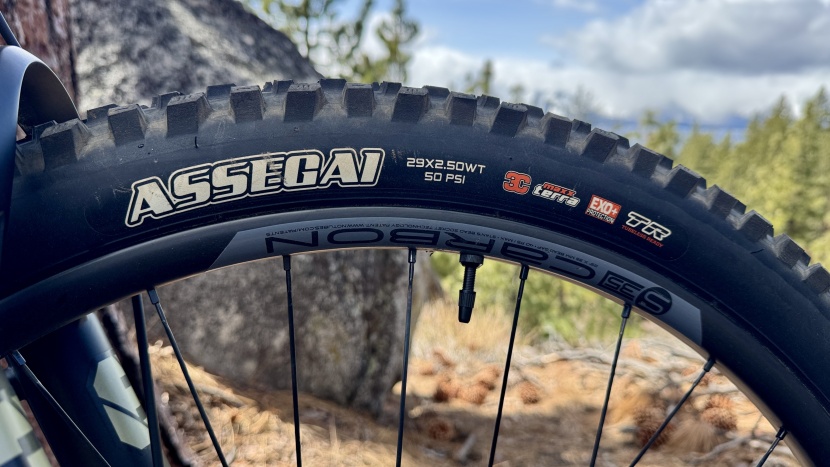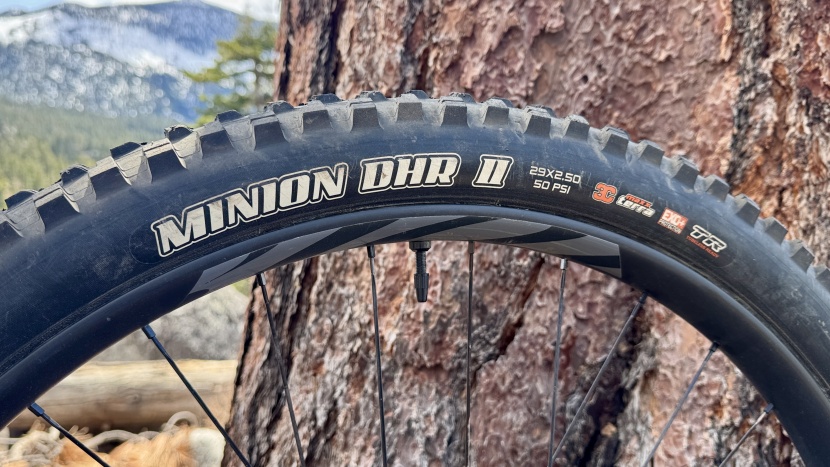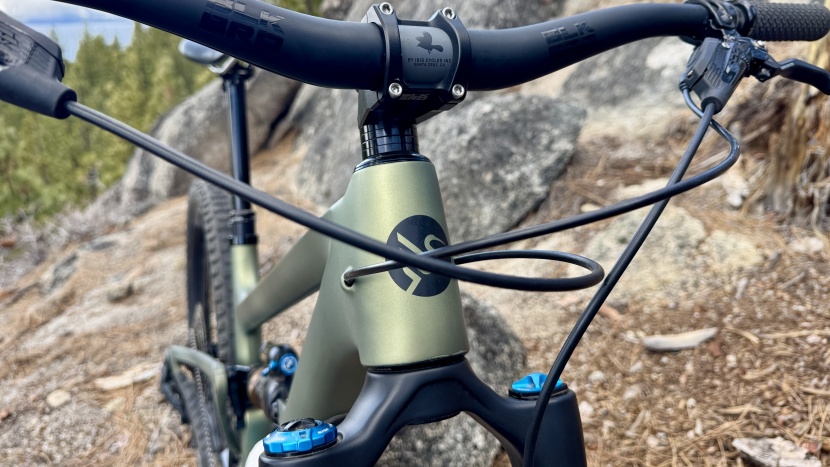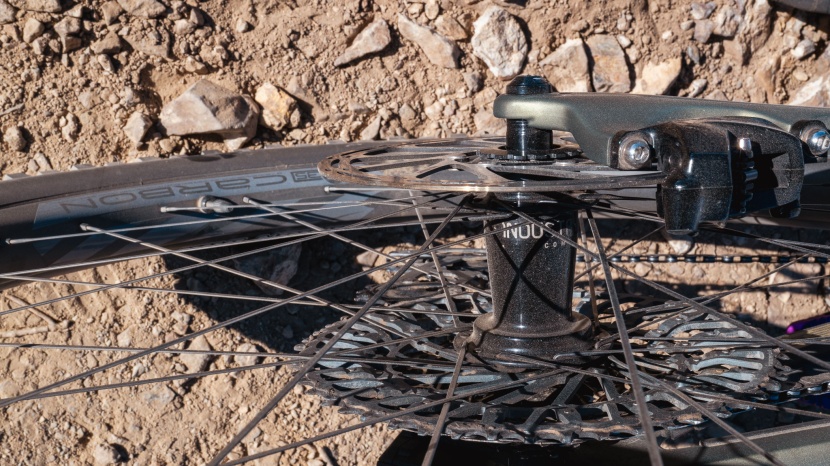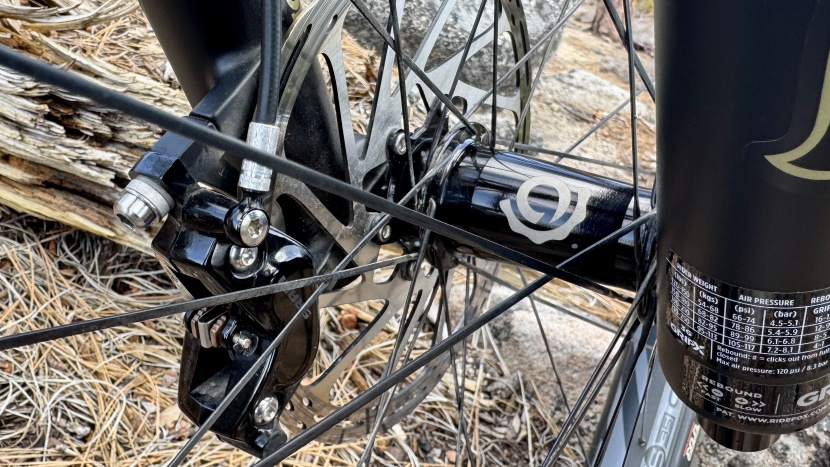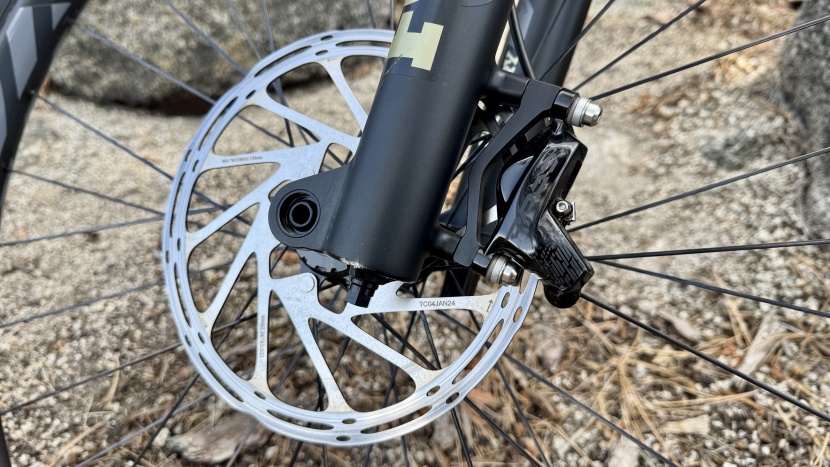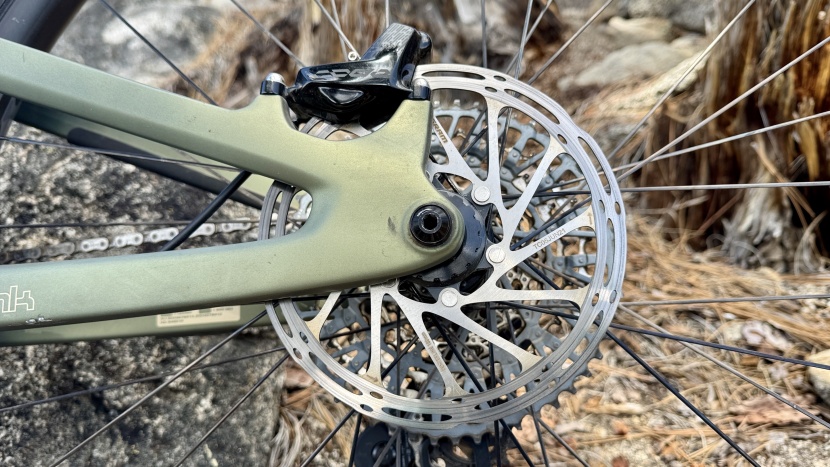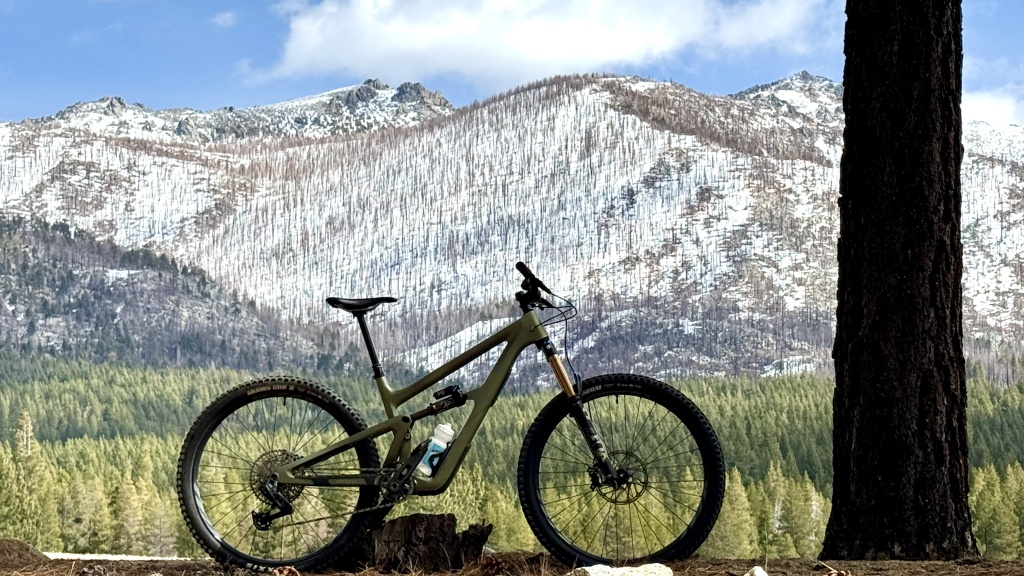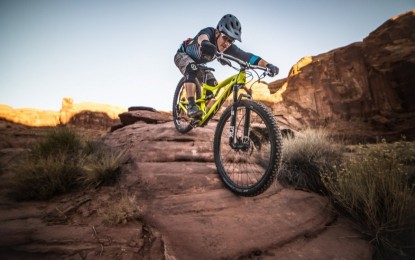Ibis Ripmo V3 GX AXS Review

Our Verdict
Our Analysis and Test Results
I'll start by saying I was giddy to ride this bike. The last two Ripmos have been such outstanding bikes that redesigning for V3 must have been an intimidating task. We generally buy all of the bikes we test, but this bike was an exception. The Ripmo was exceptionally hard to get hold of at release time, but Ibis had a media bike available. We agreed that we would donate to a cycling charity on their behalf as a rental fee for the bike. There is no breakdown of integrity, but not owning this bike means I won't get to keep it like I do many other test bikes at GearLab. I should also declare a bit of bias; back in the 90's, I rode an Ibis Mojo hardtail into the ground. It was handmade steel from Sebastopol, California, and I was saddened when Ibis was shuttered in 2001. When Ibis returned in 2005, the handmade steel bikes were gone in lieu of carbon frames made in Asia. I declared Ibis soul-less and vowed never to sell them in the bike shop I owned then. I held a grudge for years, but the reality of the bicycle industry was changing, and American manufacturing was no longer viable for most of the brands that survived. While Ibis wasn't the first to embrace Asian manufacturing, their story has stuck with me, and I still harbor a touch of resentment for the handmade steel frames that are no longer. It's irrational, but I still think of my old burnt orange Mojo when I see the Ibis logo and long for what was. With that out of the way, I do my best to be impartial in analyzing and testing these bikes. Even with my decades-old crusty grudge, I will spend the next few thousand words being effusive about this bike; it's insanely good.
Should I Buy This Bike?
The new Rimpo will not hold you back; the bike's stability is so confidence-inspiring that you'll be hard-pressed not to push your limits. As a bike tester, I find this Rimpo (and previous models) confounding; the geometry chart doesn't look remarkably different than many of the other trail bikes I test, and even bikes with more travel haven't felt this confident in burly descents. You come to expect tradeoffs with this type of descending prowess, but the Ripmo climbs like nothing else in its class. 150mm of DW-Link travel wouldn't seem like the ideal platform for climbing, but the bike maximizes your input and relentlessly claws its way to the top. More than a few minutes have been spent scratching under my helmet, staring at this bike on the side of the trail. If you're the kind of rider who feels the nuances of performance and wants to push the limits of speed and control, this bike will challenge your assumptions about how a trail bike can ride.
Frame Design
When Ibis went back to the drawing board for the new Ripmo, it was also time to update the venerable Ripley. In a win for engineering and production, they figured out how to make both bikes using the same front and rear ends. The two bikes use different forks, shocks, and clevises to achieve the different objectives of their respective travel classes. While the Rimpo gets everything we want and more, the Ripley picks up 2 pounds of carbon fiber, which feels unfortunate. Many riders of the old Ripley (myself included) would add 140mm forks and 4-piston brakes to make a mini-enduro feeling bike, but some of the joy in that setup was how light and nimble the bike felt, and I can't imagine that remains. Alas, this isn't a review of the Ripley; that will be coming. Having both bikes use the same frame is a win for versatility; buy an extra fork, shock, and clevis, and you've got two bikes.
The updated V3 Ripmo doesn't look radically different than the V2, but the storage door in the downtube, flip chips at the top of the seat stays, and more angular looks are the big standouts. The dual triangle frame uses a longitudinally mounted shock, can hold a 20 oz bottle, and features integrated bottom bracket, downtube, and chainstay protection. The original Ripmo had a 145mm rear end, the V2 had 147mm, and we've settled into a nice, even 150mm DW-Link suspension travel for V3. The DW is a dual-link system with a lower link just above the bottom bracket and an upper link midway up the seat tube. Ibis gave the bike updated size-specific kinematics, “ensuring every size bike pedals efficiently and handles challenging trails.” This is done by focusing on the center of mass. What is so remarkable about the new Ripmo is that every size has slightly different geometry, which really gives people of different sizes the same performance attributes. On most bikes, your seat tube angle decreases as your saddle height increases and your weight is shifted backward; Ibis solved this problem by increasing the seat tube angle with each frame size. This fit issue couldn't be solved by just using different sized chainstays (but they did that, too).
Like the changes in the rear travel, Ibis was very conservative in updating the Ripmo's geometry. The bike is now 2mm longer across the top, giving an extra 3mm of reach. The headtube is 0.4 degrees slacker, and the chainstays are 1mm longer, giving the bike an overall wheelbase that has grown by 9mm. If these changes seem minimal, they are. We respect that Ibis isn't straying far from the first two wildly acclaimed Ripmo designs, but you might also be thinking, “Should I just buy the last-gen Ripmo for a lot less dough?” and there are certainly some opportunities to be had with closeout models. If you don't care about in-frame storage or the Mx wheel compatibility, you should absolutely jump on one of the deals on an older Ripmo.
Design Highlights
- V3 is available in carbon fiber only (for now)
- 29-inch or Mx wheels with a flip-chip
- 150mm of DW-Link rear suspension
- Designed around a 160mm travel fork
- Clearance for 2.6-inch wide tires
- Threaded bottom bracket
- Available in sizes S-XL, including a new Extra Medium
- Lifetime warranty on frame.
- Frame only for $3,699 and complete bikes starting at $4,999
Downhill Performance
The Ripmo V3 is the most confidence-inspiring trail bike I've ever pointed down a mountain. There is a supple feel that gives the bike outstanding small bump compliance that softens the edges. This leads to more control and composure; the platform is more progressive and has an “I've got this” attitude. A slightly slacker headtube and longer wheelbase certainly benefit the ride, but giving credit to those numbers alone would be silly. The bike isn't stingy with its travel; it's supportive but gives into a bottomless feel in big hits. The bike feels adept, athletic, and energetic; there were no situations I put this bike in where it felt out of its element or it performed in a less-than-ideal way.
There are many trails in North America that just aren't enough for the Ripmo, but none that I rode made me feel like I was on the wrong bike or that I was on too much bike. It certainly excels in nasty technical terrain and benefits the more aggressive rider. Rolling into a “no-brake drop” or high consequence line, I felt like the bike was coaxing me along and lending me its confidence. I love a low bottom bracket, but no one likes pedal strikes. Hitting a g-out corner, you can get your weight so low and centered on this bike that it feels like you're driving the Caracciola-Karussell. Ibis gave each model a different bottom bracket height, with larger bikes getting a higher bb. This isn't common practice in the bike industry, but there's wisdom behind their design. As wheelbases get longer, your breakover angle is reduced. This leads to longer bikes being less adept on rocky trails and more prone to pedal strikes, so giving the longer bikes a higher bottom bracket, all sizes benefit from size-specific handling.
The DW-Link suspension constantly feels like it was tuned for the task at hand. It's not hard to imagine a slack, 6" travel bike can slay the aggressive descents, but that's only part of the Rimpo's performance chops. The Ripmo V3 feels supple right off the top, small bump compliance is exceptional, and high-frequency choppy terrain is effectively muted. Medium-sized hits let you dive into the mid-stroke, where the bike feels more progressive. Sometimes, you get the feeling that a bunch of compression dampening is masking a bike's kinematics, but you never feel that on the Ripmo. That progressive support you feel on the way down is also there when you jump on the gas with excellent anti-squat properties. I sometimes expected the bike to wallow or languish in its supple feel, but it provided the opposite. Deeper in its stroke, there is even more progression, and the rear end doesn't feel bottomless, but it was far from a limiting factor. The bike never hinted at a lack of composure, even on big drops that pushed the fun meter to the extreme. In many ways, the end of the stroke feels reminiscent of a modern VPP, and that's quite the compliment.
The build kit on our test bike felt optimized for high-speed drops in elevation. The Fox Factory 36 and Float X provided are perfectly suited for this bike (but I'd love to ride it with a coil!). The Float X has a dampening switch that we played with on sustained gravel climbs, but I always preferred the shock wide open. The shock and X2 damper provide a fair bit of tunability; I found my sweet spot at about 5% less air than Ibis recommended. 4-piston SRAM Code RSC brakes provided the deceleration with 203/180mm rotors. The brakes worked perfectly, but after riding the Mavens on a few bikes, I think the Ripmo could benefit from SRAM's most powerful stoppers. Ibis S35 wheels give the Minion and Assegai tires a wider profile than you'll find on most bikes. The rims measure 35mm internally, giving the tires a bit more ground contact, traction, and stance. This is evident when you corner or grab a handful of brakes. It's even more pronounced when you land to flat; the rim / tire interface doesn't allow for that squirm you sometimes feel when you've maxed out your travel.
A Blackbird Carbon handlebar on our test bike measured 800mm but had some tricks under its grips. The bar uses trimmable 25mm aluminum inserts in the end that give the bar a bit more durability. The Mor-On inserts thread in, allowing you to add or subtract width at will; you won't find many other bars with adjustable width. A Bike Yoke Revive dropper post gave up 185mm of drop on our XM-sized bike, while the L and XL bikes got 213mm of drop, and S and M got 125mm and 160mm, respectively.
Climbing Performance
Of course, 150mm of DW-Link travel descends well, but the real surprise on the Ripmo happens when you point it uphill. The sensation I get on this bike is that someone is holding the back of the saddle. It feels like you're being pushed along, but the rear end is staying much higher in its travel than you might expect. When climbing exceptionally steep terrain on a big trail bike, there is sometimes a feeling that the suspension surrenders to the pedaling forces and positioning. This is particularly apparent when the rider's center of mass falls behind the rear axle; suddenly, the bike dips into its travel, and your headtube and seat tube angles become far from ideal. You're wallowing in the travel with your bb too low and your weight too far back; this is why we ride the rivet or sit on the nose of the saddle. The Ripmo gives you the opposite sensation. I rarely found myself pulling forward, and I could instead stay centered on the saddle and concentrate on putting down the power.
Much of the bike feels like it's working in your favor on the climb. The aforementioned position, wide contact patch, and sensitive suspension give you optimal traction in steep, loose, or chunky terrain. Jumping out of the saddle to sprint or power up a climb, you notice the favorable anti-squat properties that somehow feel supportive to you and sensitive to the terrain. In my timed climb sections, I put down faster times on the Ripmo than I did on the new Trek Top Fuel or Revel Rascal with 120 and 130mm of travel, respectively.
More so than with other bikes, and particularly due to the addition of an XM size, you really need to study the geometry of the new Ripmo before deciding on your size. I've always ridden a large Ripmo, but I now find the Extra Medium ideal. Since each size has a unique seat tube angle, some reach numbers look huge on larger sizes because the top tube lengths are pushed forward as the seat tube angle increases; this, in turn, increases the reach. Study up before hitting the buy button if you typically rely on reach numbers for fit.
Our XM has a reach of 478mm, but it never felt long or over-stretched across the top. I found the seated climbing position ideal, with near-perfect power transfer above the bb. While no one would think a 64.5-degree headtube would climb well, the front end tracked well and remained planted on all but the steepest pitches. 436mm of chainstay and a 76.5-degree seat tube angle keep your center of mass far enough forward that you don't easily get to that point of inflection where you pivot over the rear axle.
The bike is long, and I've spent weeks thinking about how this negatively affects its handling. It would be tempting to say the 1249mm wheelbase makes the bike feel less nimble in tight terrain, but that never felt like it was the case. The bike's length pays serious dividends in the stability and speed department, but those things don't matter on the way up. After much thought on the matter, I've decided that its wheelbase matters less than I thought it did. Perhaps the wheelbase is like a trail bike's weight, and if you've been riding long enough, you know that a “good bike weighs what it oughta.”
Photo Tour
Value
Our test bike has a retail price of $ 7,799, plus a carbon wheel upgrade that adds $ 1,400 to the purchase price. That's a lot of dough, but if you're in the market for a new, high-end trail bike, it's in line with other brands. There are many bikes out there with premium price tags, but very few are as well-engineered and executed as this. This bike is so good that the price is almost irrelevant, but we all live with some financial constraints, so let's look at the build prices. The Ripmo starts with a full Shimano Deore build and Marzocchi suspension for $5199. The Sram 90 build comes in at $6749, and XT Di2 can be bought for $8299. I feel like the bike we had is the sweet spot of performance for value, and it's the bike I recommend to most of my friends. If you've saved enough of your allowance, the XTR Di2 build with Carbon wheel upgrade costs just under $10,000. The top trim Santa Cruz Hightower sells for $11,399, and the halo model of the Stumpjumper 15 Evo lists for $11,299. I'd rather ride the Ripmo GX AXS than either of these bikes.
Conclusion
At the risk of sounding like a fanboy, the Ripmo V3 is the ultimate trail bike this year. It can outclimb bikes with far less travel and absolutely slays when pointed downward. There are so many similar bikes, and nothing comes close to the flat-out performance of the Ripmo in redline conditions. Would I change anything about the bike or spec? A set of Schwalbe radial tires and some Maven brakes would make it my dream ride, but I clearly have no real complaints. Seek out an Ibis demo or test-ride one at your local bike shop, but beware, you'll be hard-pressed not to buy one.
| Awards | Best Overall Trail Bike |
|---|---|
| Price | $7,799 List Check Price at Backcountry |
Overall Score  |
|
| Star Rating | |
| Bottom Line | Ibis does it again, somehow the Ripmo V3 is even better than its predecessors; with added frame storage and mixed wheel compatibility, this is the trail bike to have |
| Pros | Outstanding climbing performance, Crushes descents, Always composed |
| Cons | Pricey, Slightly heavy |
| Rating Categories | Ibis Ripmo V3 GX AXS |
| Fun Factor (25%) | |
| Downhill Performance (35%) | |
| Climbing Performance (35%) | |
| Ease of Maintenance (5%) | |
| Specifications | Ibis Ripmo V3 GX AXS |
| Wheel size | 29" or MX |
| Suspension & Travel | DW-Link - 150mm |
| Measured Weight (w/o pedals) | 31 lbs 12oz (XM) |
| Fork | Fox Float 36 Grip X Factory 160mm |
| Shock | Fox Float X2 |
| Frame Material | Carbon Fiber |
| Frame Size | XM |
| Frame Settings | 29/MX |
| Available Sizes | S-XL |
| Wheelset | Ibis S35 Carbon with I9 hubs, 35mm ID |
| Front Tire | Maxxis Assegai 3C MaxxTerra EXO+ 2.5" |
| Rear Tire | Maxxis Minion DHR II 3C MaxxTerra 2.5 EXO+ |
| Shifters | SRAM AXS Pod |
| Rear Derailleur | SRAM GX Eagle AXS |
| Crankset | SRAM GX Eagle T-Type DUB 170mm 30t |
| Saddle | WTB Silverado Pro 142mm |
| Seatpost | Bike Yoke Revive (160mm size XM) |
| Handlebar | Blackbird Hi Fi, 35mm, 30mm Rise, 800mm |
| Stem | Blackbird 35mm, 50mm length |
| Brakes | SRAM Code RSC, 4 Piston |
| Measured Effective Top Tube (mm) | 630 |
| Measured Reach (mm) | 478 |
| Measured Head Tube Angle | 64.5-degrees |
| Measured Seat Tube Angle | 76.5-degrees |
| Measured Bottom Bracket Height (mm) | 344 |
| Measured Wheelbase (mm) | 1249 |
| Measured Chain Stay Length (mm) | 436/433 |
| Warranty | Lifetime |


